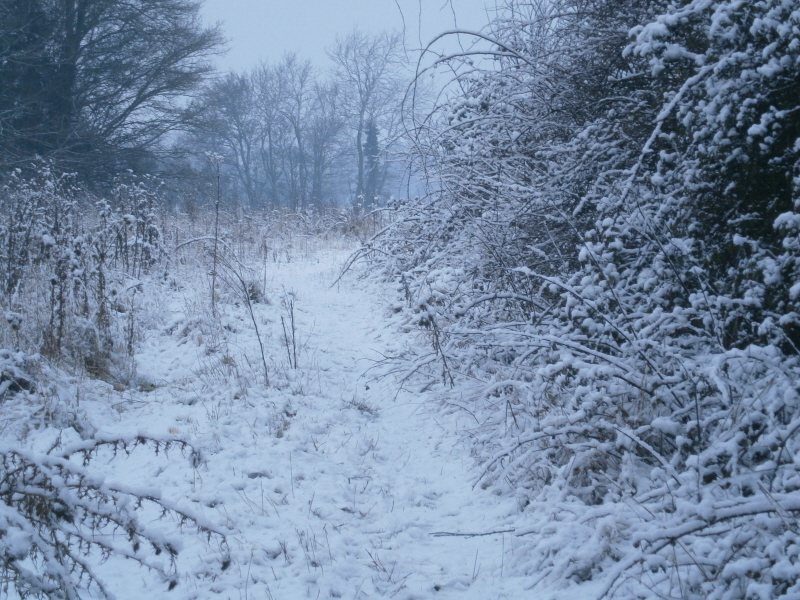
12 Feb Outdoors Under a Snow Moon
This weekend there was a full moon, a snow moon, and the nights glowed beneath a blanket of cloud.
Full moons are named for the weather or wildlife associated with that month and February is a time when the weather often turns wintry. We couldn’t see the full moon on Friday or Saturday night because it snowed, so this year it is well named.
We walked out this morning. Only an inch of snow had fallen, and it was not crisp with frost, but it still squeaked delightfully as we trudged through. Fieldfares were hugging the hedges for fallen apples and tracks showed where rabbits had searched out from the ditches.
Despite the problems for livestock farmers and traffic, there is something about snowfall that brings out a childhood enjoyment of the outdoors. Leaves are for kicking through, ice is for cracking on puddles and snow is for running, making snowmen and throwing snowballs.
It was a pleasure to hear the squeals of delighted children walking out at dawn to play in the snow. In a time when conservationists express concern about children’s disconnection to nature, here they are, outdoors in the cold, relishing their time before the inevitable thaw that will come later today.
At the end of January, Suffolk County Council held its annual Most Active County event, promoting the value of outdoor exercise to our health and wellbeing. Evidence has been accumulating over twenty or thirty years to show that being outdoors, or engaging with the natural world, reduces stress and aids recovery from illness.
The term biophilia is used to describe an innate need to be connected to the environment which, it is said, is within our genetic makeup. Critics of this theory remind us that, at one time, the environment presented us with challenges of cold, hunger, and danger from predatory animals. In seeking to protect ourselves from the unpleasant aspects of the natural world, we have probably gone too far in creating lives insulated from the sights, smells and sounds that are now being prescribed to help us recover wellbeing.
Those of us who value our connection to the natural world, and work for its protection, are drawn towards these theories in our search for ways to bring the environment to a wider audience. Suffolk County Council has even prepared a Nature Strategy, which sets out recommendations and actions to demonstrate to decision makers how important Suffolk’s environment is for economic growth, health and wellbeing. 40 pages long, with 28 recommendations and 15 actions it is not a quick or easy read. But it has an important message that I hope will be heard – and heeded. Its aspiration is for people’s “understanding of the importance of the natural environment” to go “far beyond its beauty.”
But for now, it is time to top up the bird feeders and enjoy the beauty of the last of the snow.
To download a copy of the Nature Strategy see here:
http://www.suffolk.gov.uk/index.php/planning-waste-and-environment/suffolks-countryside-and-wildlife/protecting-the-environment/suffolk-nature-strategy/


